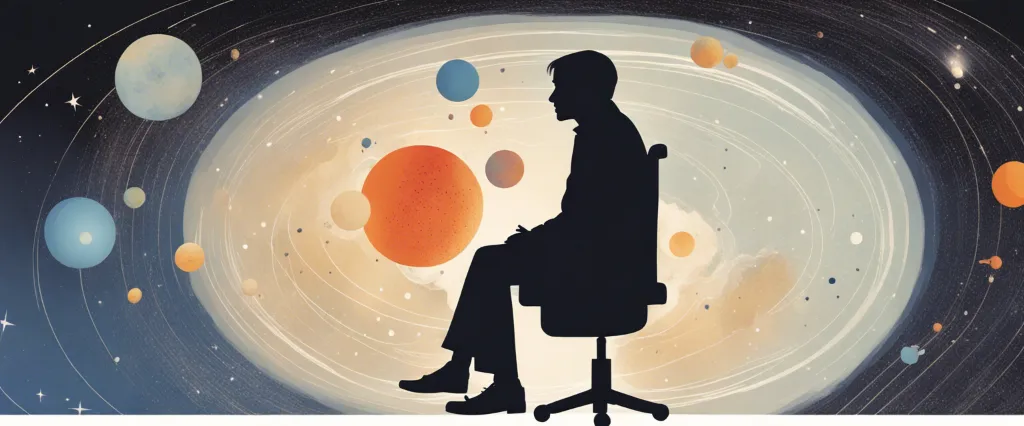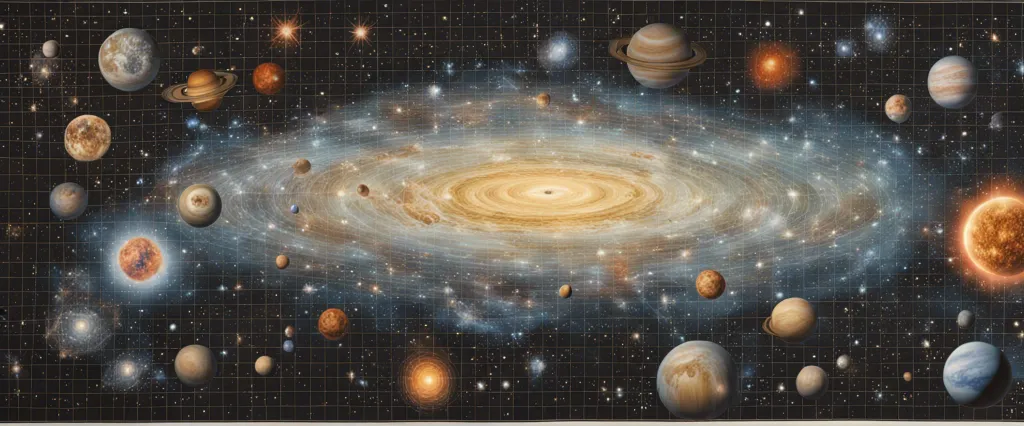
In “The Universe in a Nutshell,” acclaimed physicist Stephen Hawking takes us on an awe-inspiring journey through the vast expanse of the cosmos, exploring the mysteries that lie within our universe. In this visionary work, Hawking combines his deep knowledge of theoretical physics with his brilliant ability to simplify complex concepts, offering a remarkable glimpse into the workings of the cosmos. With his unparalleled expertise and profound curiosity, Hawking uncovers the secrets of space and time, providing a comprehensive overview that enlightens and captivates readers of all backgrounds.
Stephen Hawking, a renowned cosmologist and theoretical physicist, was born on January 8, 1942, in Oxford, England. Despite being diagnosed with amyotrophic lateral sclerosis (ALS) at the age of 21, Hawking never allowed his physical limitations to hinder his intellectual pursuits. Throughout his career, he made groundbreaking contributions to the understanding of black holes, the nature of time, and the origin of the universe. His revolutionary book, “A Brief History of Time,” became an international bestseller, captivating millions of readers and solidifying his status as one of the greatest scientific minds of our time. Hawking’s remarkable ability to communicate complex scientific concepts in a clear and accessible manner has inspired countless individuals and continues to shape our understanding of the universe.
Chapter 1: The Quest for a Theory of Everything
In Chapter 1 of “The Universe in a Nutshell” by Stephen Hawking, titled “The Quest for a Theory of Everything,” Hawking begins by discussing the ancient Greeks’ philosophy of understanding the world through reason and deduction. He explains that they believed finding a single theory that could explain everything in the universe would bring us closer to understanding the nature of existence itself.
Hawking then introduces the concept of a “Theory of Everything,” which seeks to unify the fundamental forces of nature, including gravity, electromagnetism, and the strong and weak nuclear forces, into a single coherent framework. He explains how such a theory would provide a profound understanding of the building blocks and structure of the universe, as well as its evolution.
Next, Hawking delves into the history of physics, starting with Isaac Newton’s laws of motion and universal gravity, followed by Albert Einstein’s theory of relativity. While Newton’s laws provided a description of the macroscopic world, Einstein’s relativity was a breakthrough that expanded our understanding to the cosmic scale. However, these theories remain incomplete as they fail to encompass the microscopic realm, such as the behavior of subatomic particles.
Hawking introduces the field of quantum mechanics, which describes the behavior of particles on a very tiny scale. The inherent randomness and uncertainty in quantum mechanics pose a challenge to developing a complete Theory of Everything that can reconcile with the deterministic laws of classical physics.
To conclude, Hawking emphasizes the importance of a Theory of Everything not only for the advancement of science but also to satisfy humanity’s deep curiosity about the nature of the universe. While significant progress has been made, the quest for a unified theory continues, and future breakthroughs may shed light on the fundamental laws that govern our existence.
Chapter 2: The Shape of Space and Time
In Chapter 2 of “The Universe in a Nutshell,” Stephen Hawking delves into the concept of space and time, and how they shape the universe as we know it. He starts by describing how we perceive three dimensions of space and one dimension of time, making up the fabric of our reality. However, he introduces the notion that this four-dimensional spacetime can be curved and stretched, leading to astonishing possibilities.
Hawking explains that the curvature of spacetime is influenced by the distribution of energy and matter, following Einstein’s theory of general relativity. Mass and energy create a gravitational field that can warp the shape of spacetime, causing objects to move on curved paths. This curvature is not restricted to massive objects like planets or stars but can occur on smaller scales as well.
Moreover, Hawking delves into the idea of a four-dimensional hypersurface that encompasses all of spacetime, called the “light cone.” He illustrates that within the light cone, events can be influenced and interact with one another, while events outside the light cone remain independent and unconnected. The structure of the light cone highlights the causality principle, explaining why events occur in a certain order and follow a logical progression.
Hawking concludes the chapter with an exploration of the possibilities of the shape of the universe. He introduces the concept of “closed” and “open” universes, determining whether spacetime is finite or infinite, and whether it bends back on itself or expands without boundaries. The shape of the universe is intricately connected with its expansion and destiny, posing significant questions that scientists continue to explore.
Overall, Chapter 2 enlightens readers about the dynamic nature of spacetime and its curvature, showcasing its profound impact on the shape of our universe and the interconnected nature of events.
Chapter 3: The Quantum World
Chapter 3 of “The Universe in a Nutshell” by Stephen Hawking, titled “The Quantum World,” delves into the fascinating realm of quantum physics and its implications for our understanding of the universe.
Hawking begins by explaining that quantum theory arose from attempts to understand the behavior of particles at the subatomic level, such as electrons. Unlike classical physics, which deals with deterministic outcomes, quantum theory introduces the concept of probabilities. Rather than being defined by precise measurements, particles can exist in a range of states simultaneously until observed or measured, at which point the probabilities collapse into a definite outcome.
The author describes various foundational principles of quantum theory, including superposition and the uncertainty principle. Superposition refers to the ability of particles to exist in multiple states simultaneously, like an electron being both a particle and a wave. The uncertainty principle, on the other hand, states that there are inherent limitations in precisely knowing both the position and momentum of a particle at the same time.
Hawking also explores the intriguing phenomenon of quantum entanglement, where two particles become correlated in such a way that the behavior of one particle instantly affects the other, regardless of the distance between them. This phenomenon challenges classical notions of causality and raises profound questions about the nature of reality.
The chapter further discusses the role of quantum theory in understanding black holes. Hawking explains that, contrary to classical physics, quantum mechanics allows particles to escape from a black hole through a process known as “Hawking radiation.” This realization has had profound implications for our understanding of the thermodynamics and ultimate fate of black holes.
Overall, in this chapter, Hawking explores the fundamental principles and mind-bending consequences of quantum theory, providing readers with a glimpse into the strange and counterintuitive nature of the quantum world.
Chapter 4: Black Holes and Beyond

In Chapter 4: Black Holes and Beyond of the book “The Universe in a Nutshell” by Stephen Hawking, the renowned physicist delves into the fascinating phenomena of black holes and explores the possibilities of what lies beyond them.
Hawking begins by explaining that black holes are formed when a massive star collapses under the force of its own gravity, becoming so dense that nothing can escape its gravitational pull, not even light. Nevertheless, black holes are not entirely black; they emit radiation known as “Hawking radiation,” a concept contributed by Hawking himself. This radiation is caused by quantum effects near the event horizon, the boundary of a black hole, where particles are created and annihilated constantly.
The concept of information preservation within black holes is also discussed. Hawking proposes that according to the principles of quantum mechanics, the information of what went into a black hole must be preserved. This challenges the older notion that black holes simply destroy all information, a paradox known as the “black hole information paradox.”
Moving beyond black holes, Hawking raises the possibility of wormholes, theoretical shortcuts in spacetime that could potentially allow for interstellar travel. However, he notes that wormholes are highly unstable and would require the presence of exotic matter to keep them open, which has yet to be discovered.
The final part of the chapter explores the concept of a “baby universe.” Hawking speculates that the universe we observe may have originated from a singularity within a black hole of a higher-dimensional universe. This would mean that black holes could be portals to other universes, creating a multiverse where numerous universes coexist.
In summary, Chapter 4 of “The Universe in a Nutshell” provides an intriguing exploration of black holes, their properties, and the possibilities they entail. From the enigmatic behavior of Hawking radiation to the potential existence of wormholes and the concept of a multiverse born from black holes, Hawking’s explanations and speculations illuminate the mind-bending nature of the cosmos beyond the event horizon.
Chapter 5: The Nature of Reality
Chapter 5: The Nature of Reality from the book “The Universe in a Nutshell” by Stephen Hawking explores various aspects of reality and how our perception of it is influenced by our observations and understanding.
Hawking begins the chapter by discussing the history of our understanding of reality, starting with the ancient Greeks who believed in a flat Earth surrounded by a transparent dome enclosing the night sky. He then delves into the modern concept of reality, shaped by the works of physicists such as Isaac Newton and Albert Einstein. Newton’s laws of motion and gravity provided a framework for understanding the physical world, while Einstein’s theory of relativity revolutionized our understanding of space and time.
Hawking then introduces the concept of quantum mechanics, which applies to the subatomic realm and challenges our classical understanding of reality. Quantum mechanics implies that particles and energy can exist in multiple states or locations simultaneously, leading to the concept of superposition. Additionally, the theory suggests that particles can be in a state of entanglement, where the properties of one particle depend on the state of another, regardless of their distance apart.
The chapter also explores the idea of a multiverse, where multiple universes exist beyond our own. Hawking describes how the laws of physics in each universe might differ, leading to the anthropic principle, which suggests that our universe has the specific properties necessary for the existence of life.
Towards the end of the chapter, Hawking presents the holographic principle, which suggests that the universe might be a projection of information encoded on its boundary. This concept challenges our perception of three-dimensional reality, proposing that it may just be an illusion or a hologram.
Overall, Chapter 5 offers an engaging exploration of reality, combining historical perspectives, modern physics, and cutting-edge theories to challenge and expand our understanding of the nature of the universe.
Chapter 6: The Arrow of Time
Chapter 6 of “The Universe in a Nutshell” by Stephen Hawking, titled “The Arrow of Time,” delves into the concept of time and its directionality within the universe. Hawking touches upon various theories and hypotheses to explain why time seems to possess an inherent asymmetry.
He begins by discussing the concept of entropy, which is associated with disorder and randomness. According to the Second Law of Thermodynamics, entropy tends to increase over time. Hawking highlights the significance of this law by stating that it provides a direction for time, known as the “arrow of time.” He explains that if entropy were to decrease, time could potentially run backward.
The author then outlines three propositions that might explain the arrow of time. The first proposition suggests that the asymmetry is caused by the initial conditions of the universe. According to this theory, the low entropy state shortly after the Big Bang is responsible for the arrow of time. However, Hawking believes this proposition to be unsatisfactory due to its reliance on the extreme initial conditions.
The second proposition introduces the idea of a natural selection of histories, where the fundamental laws of physics favor specific directions of time. This proposition is related to the concept of the multiverse, where numerous universes with varying physical laws exist. Hawking posits that among this multitude of universes, only those with laws that support life and have an arrow of time will be observed.
Lastly, Hawking explores the possibility that the arrow of time might emerge from a deeper underlying theory that unifies quantum mechanics and gravity. While this theory is still hypothetical and not yet fully developed, Hawking believes it could ultimately provide an explanation for the directionality of time.
In summary, Chapter 6 of “The Universe in a Nutshell” delves into the concept of the arrow of time. Hawking discusses various propositions that aim to explain the directional nature of time, including the significance of entropy, the influence of initial conditions, the idea of natural selection of histories within the multiverse, and the potential unification of quantum mechanics and gravity.
Chapter 7: The Origin and Fate of the Universe
Chapter 7 of “The Universe in a Nutshell” by Stephen Hawking explores the origin and fate of the universe. Hawking begins by discussing the Big Bang theory, which suggests that the universe began as an extremely dense and hot singularity around 13.7 billion years ago. He explains how the expanding universe has been continuously cooling down, eventually leading to the formation of galaxies, stars, and other celestial bodies.
Hawking then delves into the concept of inflation, which suggests that the early universe rapidly expanded in size shortly after the Big Bang. He explains that inflation helped explain why the universe appears to be remarkably uniform and flat on a large scale. He introduces the concept of “eternal inflation,” suggesting that within the inflationary universe, new regions constantly undergo inflation, leading to the creation of various universes with different laws of physics.
The author also explores the idea of multiple universes, or the “multiverse.” He introduces the anthropic principle, which states that our particular universe’s physical constants and laws must be suitable for our existence. Hawking argues that the existence of a multitude of universes with different constants and laws can be seen as a natural consequence of inflation.
Hawking concludes the chapter by discussing the potential fate of the universe. He examines various scenarios, including a “closed” universe that will eventually collapse under gravity, an “open” universe that continues expanding forever, and a flat universe that teeters on the edge between expansion and collapse.
In summary, Chapter 7 explores the origin of the universe through the Big Bang theory, the concept of inflation, and the possibility of multiple universes. It also speculates on the fate of the universe, considering different possibilities for its ultimate trajectory.

Chapter 8: The Grand Design
Chapter 8 of “The Universe in a Nutshell” by Stephen Hawking, titled “The Grand Design,” explores the concept of a theory of everything and the fundamental laws that govern the universe. Hawking delves into the quest for a unified theory that encompasses all physical phenomena and explains the interconnectedness of different scientific disciplines.
Hawking starts by discussing the history of physics, highlighting the revolutionary theories of Isaac Newton and Albert Einstein. These brilliant minds paved the way for understanding gravity and space-time. However, their theories are incomplete, as they fail to incorporate quantum mechanics—the branch of physics dealing with the behavior of matter and energy at the smallest scales.
To achieve a theory of everything, physicists must reconcile general relativity (Einstein’s theory of gravity) and quantum mechanics. Hawking introduces the concept of the “Theory of Everything” (TOE), which would provide a single framework to explain the behavior of all matter and energy in the universe.
Furthermore, Hawking explores the notion of M-theory, a candidate for the TOE. He explains that this theory unifies five different string theories, each dealing with higher dimensions. M-theory suggests that the universe could exist in multiple dimensions beyond the three spatial dimensions we are familiar with.
Hawking emphasizes that if we can unlock the secrets of the TOE, it would enable us to understand how our universe was born, give us a deeper understanding of the Big Bang, and potentially explain why physical laws take the specific form they do.
In conclusion, chapter 8 of “The Universe in a Nutshell” delves into the search for a grand design—a theory of everything that would provide a unifying framework for understanding the fundamental laws of the universe, incorporating both general relativity and quantum mechanics.
After Reading
In conclusion, Stephen Hawking’s book, The Universe in a Nutshell, provides a comprehensive overview of our current understanding of the cosmos. Through a combination of insightful explanations and engaging illustrations, Hawking delves into various theories and concepts, from quantum mechanics to the mysteries of black holes and the nature of time. The book emphasizes the remarkable progress made in unraveling the secrets of the universe, while also highlighting the remaining areas of uncertainty and the questions that still perplex scientists. By presenting complex ideas in a accessible manner, Hawking enables readers to gain a deeper appreciation for the vastness and intricacies of the cosmos. Ultimately, The Universe in a Nutshell leaves us with a sense of awe and wonder, inspiring us to further explore the infinite possibilities that lie within the universe.
1. Sapiens: A Brief History of Humankind” by Yuval Noah Harari
This captivating book takes readers on an incredible journey through the course of human history, exploring the questions of who we are, where we came from, and where we might be headed. Harari delves deep into the various revolutions that have shaped our species, blending science, history, and philosophy to provide a thought-provoking and enlightening read.
2. The Alchemist” by Paulo Coelho
A timeless classic that invites readers to embark on a spiritual quest, “The Alchemist” tells the tale of Santiago, an Andalusian shepherd boy who sets out on a journey to fulfill his dreams. Coelho’s masterful storytelling and profound message about following one’s heart and embracing the unknown make this a must-read book for anyone seeking inspiration and personal growth.
3. The Power of Now: A Guide to Spiritual Enlightenment” by Eckhart Tolle
In our fast-paced modern world, this book serves as a reminder to slow down and embrace the present moment. Tolle’s teachings provide practical insights on how to break free from past regrets and future anxieties, helping readers discover inner peace and live a more fulfilling life. “The Power of Now” is a transformative read that encourages a deeper understanding of the self and our connection to the world.
4. “A Man Called Ove” by Fredrik Backman
This heartwarming and humorous novel revolves around Ove, a grumpy yet lovable old man who has given up on life. But when lively new neighbors move in next door, they unintentionally disrupt the solitude and routines Ove has carefully built. Through unexpected friendships and touching moments, Backman beautifully explores themes of community, compassion, and finding joy in the little things.
5. The Immortal Life of Henrietta Lacks” by Rebecca Skloot
Blending science, history, and personal narrative, this gripping non-fiction book investigates the story behind the immortal cells of Henrietta Lacks, known as HeLa cells, which revolutionized medical research. Skloot sheds light on the ethical implications of scientific advancement, sparking important discussions on race, consent, and the intersection of medicine and justice.



